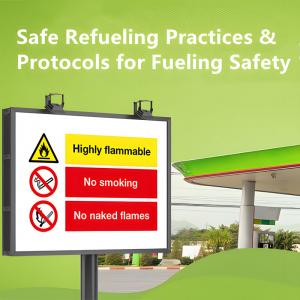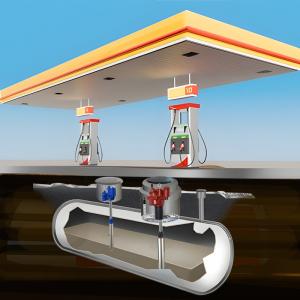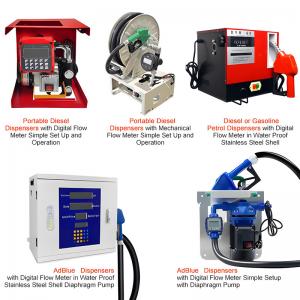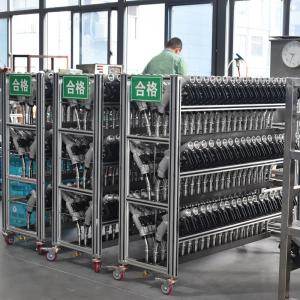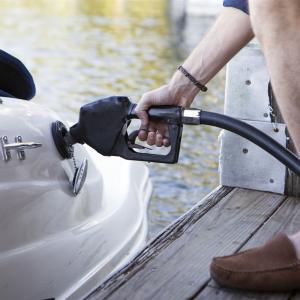LPG vs. Natural Gas: Key Differences & Applications
LPG vs. Natural Gas: Essential Differences and Their Importance in Energy Applications
In the modern energy landscape, Liquefied Petroleum Gas (LPG) and Natural Gas are two widely used fuels, each possessing unique physical and chemical properties. These differences profoundly impact their storage, transportation, usage efficiency, and safety. For any business or individual involved in fuel handling, distribution, or consumption, a deep understanding of these distinctions is crucial.
This article will provide a detailed analysis of the core differences between LPG and Natural Gas, with a particular focus on LPG's unique value in the current energy market. We'll also highlight the critical role of essential equipment like LPG dispensers, LPG pumps, and LPG flowmeters within the LPG industry supply chain.
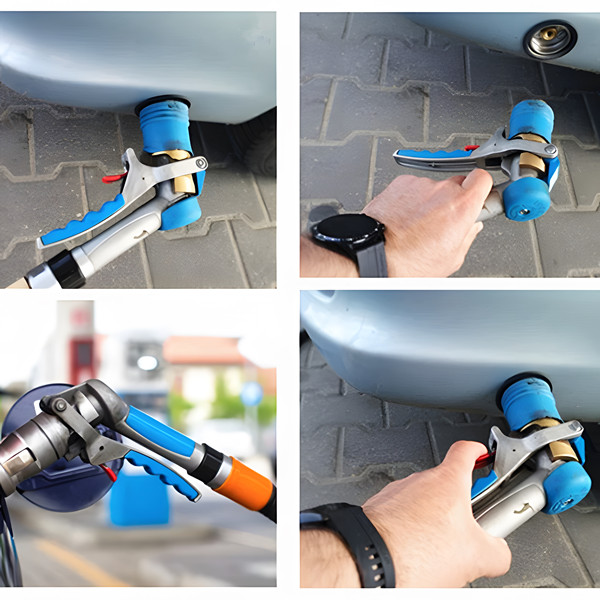
I. Fundamental Composition and Sources of LPG and Natural Gas
Natural Gas: Natural gas is a naturally occurring fossil fuel primarily composed of methane (CH₄). It also contains smaller amounts of other hydrocarbons, such as ethane, propane, and butane, along with non-hydrocarbon gases like carbon dioxide and water vapor. Natural gas is typically transported via underground pipelines directly to homes and commercial/industrial users.
LPG (Liquefied Petroleum Gas): LPG is a byproduct of natural gas processing and crude oil refining. Its main components are propane (C₃H₈) and butane (C₄H₁₀), often in varying mixtures. As its name suggests, LPG is easily liquefied under moderate pressure, which makes it highly portable. This ease of liquefaction is precisely what allows LPG to be stored and transported so efficiently.
II. Dissecting the Core Differences Between LPG and Natural Gas
Understanding the distinctions between LPG and natural gas helps us make informed choices about selecting and applying these energy sources.
1. Chemical Composition:
-
Natural Gas: Predominantly methane (CH₄).
-
LPG: Primarily a mixture of propane (C₃H₈) and butane (C₄H₁₀). This compositional difference directly leads to variations in their physical properties and combustion characteristics.
2. Storage and Transportation:
-
Natural Gas: Primarily stored and transported as a gas through pipelines. While it can also be compressed (CNG) or liquefied (LNG) for specific transport needs, its mainstream distribution method remains gaseous pipeline delivery.
-
LPG: Stored and transported as a liquid under relatively low pressure in cylinders or tanks. When LPG is released from its container, it quickly vaporizes into a gas for combustion. This liquefaction characteristic gives LPG high portability, making it ideal for areas without pipeline infrastructure or for mobile applications.
3. Energy Density (Calorific Value):
-
LPG: Has a significantly higher energy content per unit volume. This means you need less LPG to produce the same amount of heat. For instance, LPG typically has more than double the energy content of natural gas (LPG is approximately 93.2 MJ/m³, while natural gas is about 38.7 MJ/m³). This allows LPG to provide longer usage times or greater energy output from the same storage space.
-
Natural Gas: Lower energy content per unit volume compared to LPG.
4. Density (Relative to Air):
-
LPG: Heavier than air. If an LPG leak occurs, it tends to sink and accumulate in low-lying areas like basements, trenches, or vehicle undercarriages. If not detected and properly ventilated, this poses a greater explosion risk. Therefore, environments using LPG must have good ventilation and high-sensitivity gas leak detectors.
-
Natural Gas: Lighter than air. If a natural gas leak occurs, it tends to rise and dissipate quickly into the atmosphere. This somewhat reduces the immediate accumulation risk but still presents a fire and explosion hazard.
5. Combustion Characteristics (Air-to-Fuel Ratio):
-
LPG: Requires a higher oxygen-to-gas ratio for proper combustion (approximately 25 parts air to 1 part LPG).
-
Natural Gas: Requires a lower oxygen-to-gas ratio (around 10 parts air to 1 part natural gas). This difference necessitates different burner designs and pressure regulators for appliances designed for each type of gas to ensure efficiency and safety.
6. Pressure:
-
LPG: Typically supplied at a higher pressure than natural gas. This requires LPG-specific equipment to be fitted with dedicated pressure reducing valves or regulators to control gas pressure.
-
Natural Gas: Supplied at a lower, consistent pressure in homes.
7. Environmental Impact:
-
Both are cleaner-burning fossil fuels compared to coal or heavy oil.
-
Natural Gas: Produces slightly more CO₂ per unit of energy than LPG when burned, and in some cases, also has higher sulfur and nitrogen emissions. However, unburned methane (the main component of natural gas) leaking into the atmosphere is a potent greenhouse gas.
-
LPG: Often considered to have a slightly lower overall carbon footprint when burned, but its density means unburned leaks could potentially pool.
8. Availability and Suitability:
-
Natural Gas: Primarily available where pipeline infrastructure exists.
-
LPG: Highly versatile and available almost anywhere, as it can be transported in cylinders and tanks, making it an ideal choice for rural areas or mobile applications.
III. The Critical Role of LPG Equipment Components: LPG Dispensers, LPG Pumps, and LPG Flowmeters
In the LPG production, storage, transportation, and distribution chain, the performance of key equipment components directly determines the efficiency, safety, and reliability of the entire LPG system.
1. LPG Dispenser: The LPG dispenser is the central piece of equipment at LPG retail outlets, directly serving consumers who refuel their vehicles with LPG. A high-performance LPG dispenser must feature:
-
High-precision metering: The integrated LPG flowmeter must be extremely accurate, ensuring precise fuel dispensing every time. This directly relates to the fairness of trade transactions and user trust.
-
Safety features: Equipped with comprehensive safety functions like leak prevention, overpressure protection, and emergency shut-off valves to ensure safe dispensing operations.
-
User-friendliness: A clear display and simple operating procedure enhance the user experience.
-
Data management: Ability to connect with sales systems or remote management platforms for real-time data transmission, inventory monitoring, and sales report generation.
2. LPG Pump: The LPG pump is the "heart" of LPG fluid transfer systems, widely used in:
-
Unloading/Loading: Transferring LPG from large LPG road tankers to storage tanks, or loading LPG from storage tanks onto transport vehicles. This requires high-capacity LPG pumps for efficient operations.
-
Dispensing Stations: Moving LPG from storage tanks to the LPG dispenser, maintaining stable pressure and flow.
-
Cylinder Filling: At LPG bottling plants, precisely filling household or commercial cylinders with LPG. LPG pumps must be explosion-proof and capable of handling LPG's low viscosity and high vapor pressure characteristics to ensure stable and safe operation.
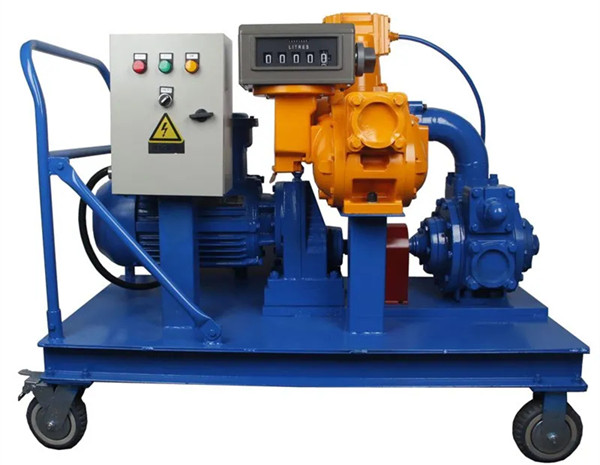
3. LPG Flowmeter: The LPG flowmeter is the core of any LPG metering system, and its accuracy and reliability are crucial for the entire LPG supply chain:
-
Custody Transfer Metering: In wholesale transactions, transport transfers, and retail sales of LPG, high-accuracy LPG flowmeters (such as positive displacement or Coriolis mass flowmeters) are the cornerstone for ensuring fair trade and compliance. They precisely measure the volume or mass of LPG, avoiding commercial disputes.
-
Inventory Management: In LPG storage tanks and depots, LPG flowmeters are used to monitor incoming and outgoing volumes, helping businesses accurately track LPG inventory and optimize purchasing and sales strategies.
-
Process Control: In LPG processing or industrial applications, LPG flowmeters are used for precise control of LPG input, ensuring stable production processes and product quality. When choosing an LPG flowmeter, consider its measurement principle, accuracy class, pressure rating, explosion-proof certification, and suitability for LPG's low temperature and high-pressure characteristics.
IV. LPG's Strategic Position in the Future Energy Landscape
Despite natural gas dominating the global energy supply, LPG holds an irreplaceable position in many specific applications and regions due to its unique advantages:
-
Energy Supplement: In areas without natural gas pipeline networks, LPG is an ideal alternative energy source, meeting the demands of residential use, commercial cooking, and industrial production.
-
Mobile Applications: LPG is the preferred fuel for vehicles (LPG vehicles/Autogas), forklifts, agricultural machinery, and RVs.
-
Cleaner Combustion: Compared to coal and traditional liquid fuels, LPG burns more cleanly with fewer emissions, contributing to improved air quality.
-
Emergency Backup: LPG often serves as a reliable backup energy source during power grid or natural gas supply interruptions.
-
Diverse Applications: Beyond fuel, LPG also acts as a chemical feedstock for producing plastics, synthetic rubber, and other materials.
Conclusion: Choosing the Right Energy, Driving an Efficient Future
LPG and natural gas each have their merits. Understanding their fundamental differences helps us make informed energy choices. For businesses dedicated to the LPG industry, investing in high-performance LPG dispensers, LPG pumps, and LPG flowmeters is fundamental to ensuring the efficient, safe, and accurate operation of LPG systems.
Against the backdrop of energy transition, LPG, as a clean, efficient, and flexible energy source, is increasingly important. Choosing the LPG equipment best suited for your business needs will be key to your success in a competitive market. We are committed to providing you with leading LPG solutions and professional support to help your business thrive.
